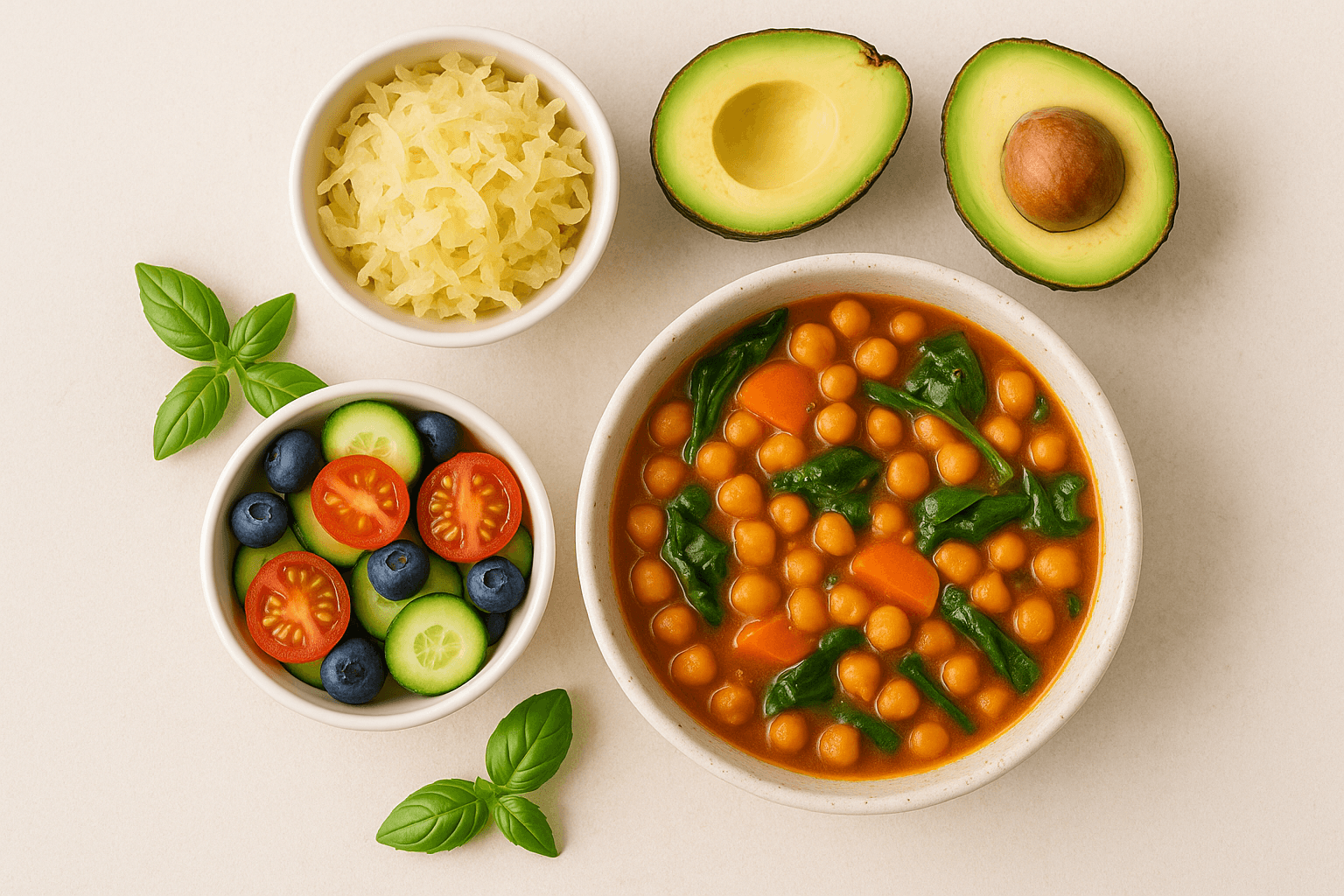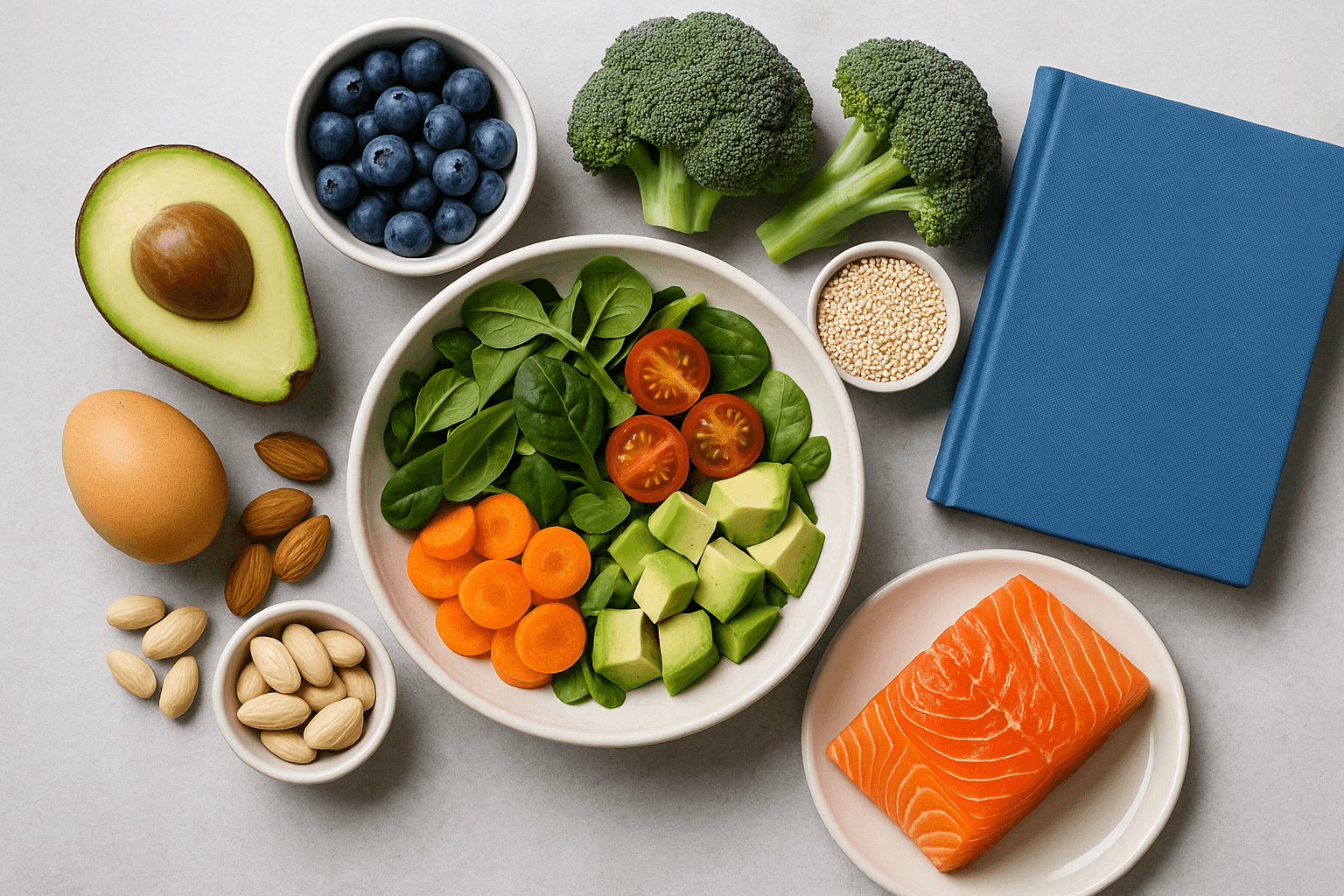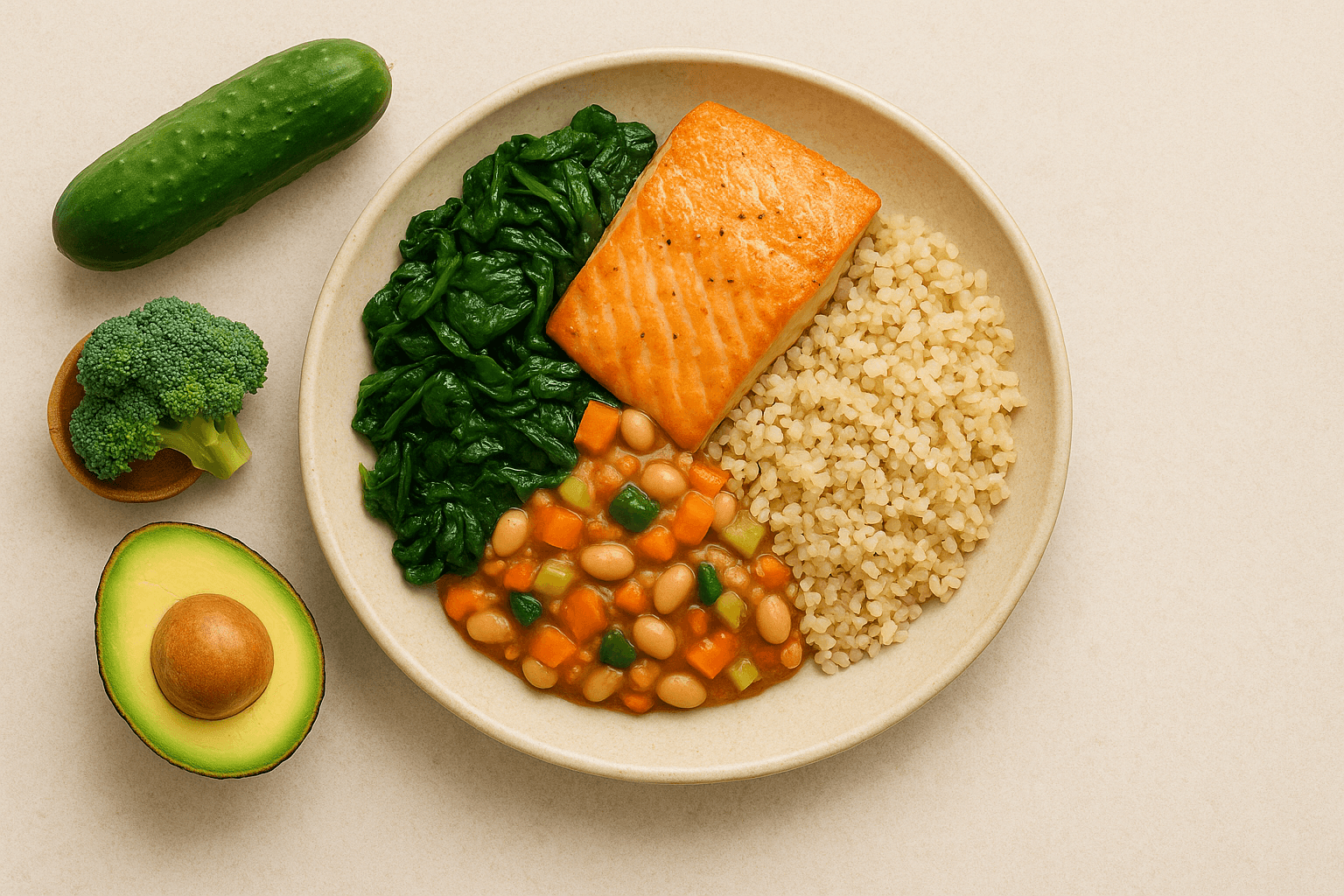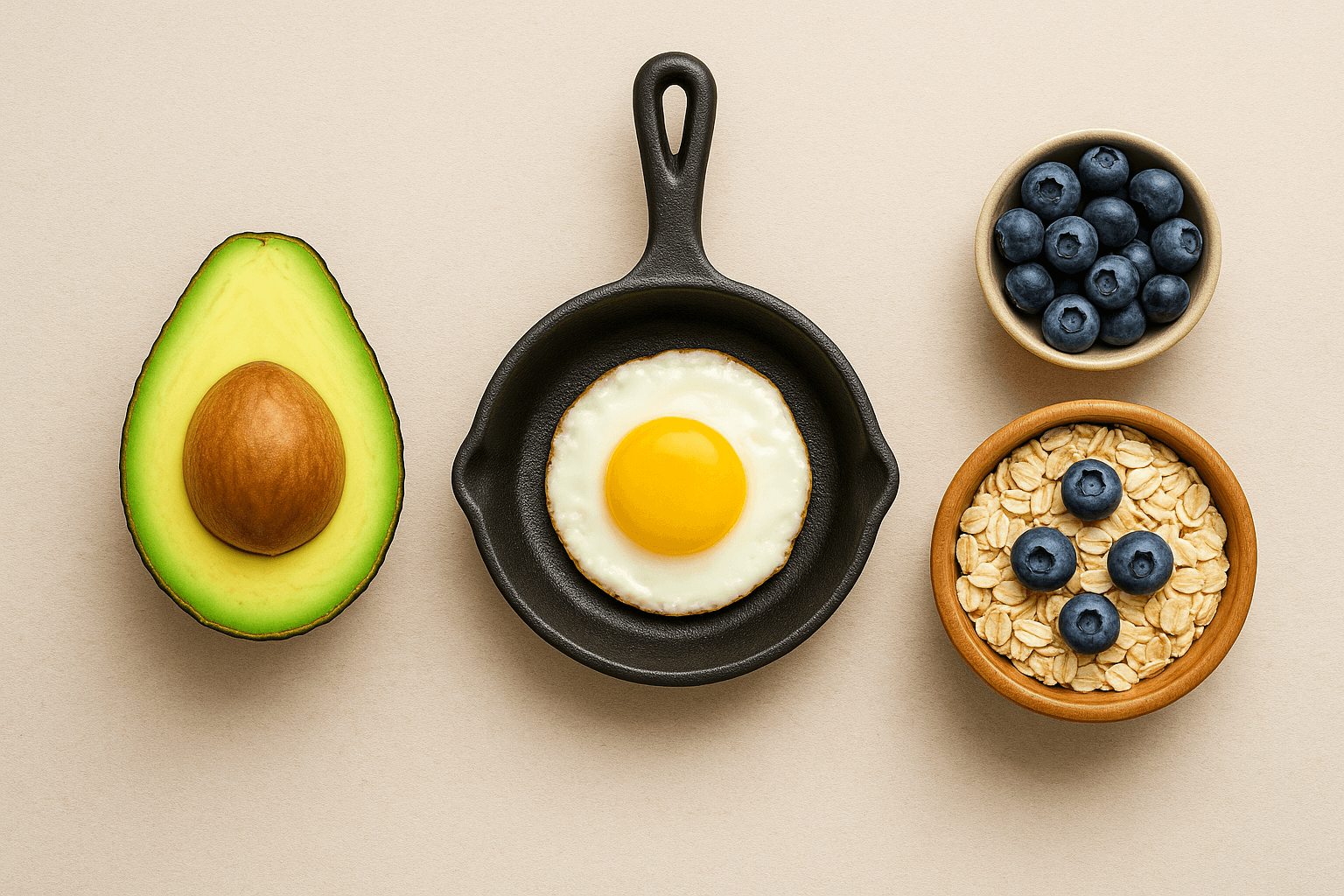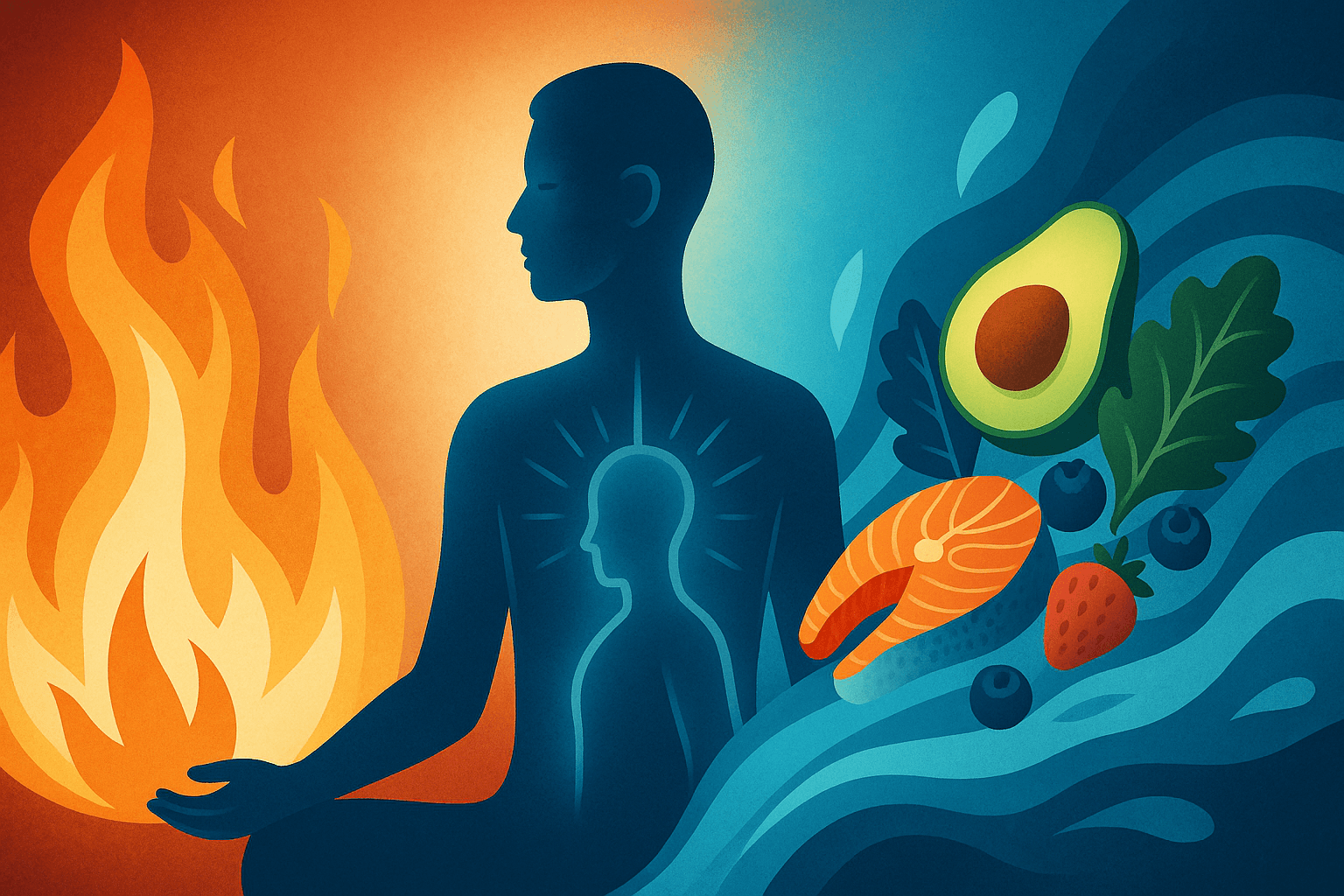Healthy Eating Reimagined: The Real Science, Lasting Habits, and Simple Joys of Everyday Nutrition
Published on July 26, 2025

Healthy eating is a word that’s everywhere — on magazine covers, at the gym, and definitely at the dinner table. Yet for many people, it can also be a cause of frustration and misunderstanding. Should you avoid carbs? Could fat actually be good for you? And should you buy organic, or does it not matter? It can all feel like noise. This noise, mixed with anxiety around what you consume, can lead to guilt, second-guessing, and even giving up on the idea of “healthy” altogether. But here’s the truth: Healthy eating isn’t about cutting out the foods you love or following overly restrictive diets, and it’s never about changing who you are in order to be successful. Instead, it’s about building a flexible, health-supporting relationship with food that fits your real life, honors flavors and tastes, and ultimately supports your well-being every day.
As a dietitian passionate about both the science and the pleasure of food, I’ve seen how diet culture can cause stress and self-doubt. Yet I’ve also witnessed the transformation that comes with small positive changes and a return to basics. You don’t have to eat perfectly to eat well. Healthy eating means feeding your hunger without overstuffing, providing your body with the right amount of nutrients and energy, and indulging in what you love to eat as a form of enjoyment, connection, and self-care. When you prioritize habits over “rules” and enjoy what you eat, healthy eating becomes a real pleasure — not a punishment.
The Foundation of Healthful Eating: MODERATION, VARIETY & PLEASURE
Three fundamental concepts support good nutrition and sustainable healthy eating: Balance, Moderation, and Enjoyment. These principles help you tune out the noise and refocus on real, achievable well-being.
Balance: View each meal as an opportunity to combine different nutrients. Carbohydrates from whole grains, fruits, or starchy vegetables provide a slow-burning energy source. Proteins from meat, fish, beans, eggs, tofu, or dairy help repair tissues, support immune function, and promote satiety. Healthy fats from avocados, nuts, seeds, olive oil, and fatty fish enhance flavor, fullness, and vitamin absorption. Including a bit of all these elements helps crowd out less nourishing foods without making you feel deprived.
Variety: No single food group provides everything your body needs. Eating a “rainbow” of colors, textures, and flavors ensures you get a wide range of vitamins, minerals, antioxidants, and beneficial compounds. Don’t just eat for looks — the nutritional spectrum you cover matters. Try different grains, rotate your vegetables, and include foods from various cuisines or cultures.
Enjoyment: Food is more than fuel — it’s culture, tradition, comfort, and joy. Loving what you eat supports sustainable healthy habits. Release guilt, slow down, and savor each bite. Whether it’s a simple apple, a family favorite, or a new recipe you’ve created, appreciate the experience of eating.
The Science of Eating Well
Nutrition research is complex, but decades of studies point to reliable truths about a healthy diet at every life stage. Some key insights include:
Put Plants at the Center of Your Plate
Vegetables, fruits, beans, lentils, whole grains, nuts, and seeds are nutritional powerhouses. High in fiber, vitamins, minerals, antioxidants, and anti-inflammatory compounds, plant foods support fullness, heart health, gut function, immunity, and long-term disease prevention. Aim to fill half your plate with plants at every meal. Enjoy them roasted, pureed, or raw — variety is key.
Choose Whole, Minimally Processed Foods
Foods closest to their natural state tend to be the most nutritious and free from unwanted additives. Whole grains like brown rice, oats, barley, and quinoa, fresh produce, lean meats, eggs, and plain dairy offer more nutrients than ultra-processed snacks, sugary drinks, or pre-made frozen meals. Read ingredient lists for added sugars, salt, or mysterious chemicals and choose simple, recognizable foods.
Prioritize Healthy Fats
The outdated belief that fat is “bad” has been disproven. Your body and brain need healthy fats to produce hormones, maintain brain function, and repair cells. Focus on unsaturated fats such as olive oil, avocado, nuts, seeds, and fatty fish like salmon, sardines, and mackerel. Use butter and coconut oil sparingly, and avoid processed meats and products containing trans fats.
Be Smart About Carbs
Carbohydrates are not the enemy; they are your body’s preferred and primary fuel source. The key is managing quantity and quality. Choose whole grains (brown rice, oats, quinoa, whole wheat bread), beans, root vegetables, and fruits for sustained energy and nutrients. Limit added sugars, sodas, candy, and refined grains that cause blood sugar spikes and crashes, leaving you hungry soon after eating.
Don’t Forget Protein
Protein is vital not just for muscles but for all cells in your body, including those in your immune system and hair, which are constantly repairing and renewing. Incorporate a mix of animal and plant proteins like eggs, fish, chicken, Greek yogurt, tofu, beans, lentils, and nuts to keep meals interesting, preserve muscle, and increase satiety.
Hydrate Wisely
Water is essential for digestion, concentration, energy, and healthy skin. Aim for 6–8 cups daily, more if you’re active or it’s hot. Herbal teas and sparkling water (and moderate black coffee) are good options. Cut back on sugary sodas, fruit juices, and other sweetened drinks that add calories and may contribute to weight gain.
Eat Mindfully and Joyfully
Rushed or distracted eating can lead to overeating and less enjoyment. When possible, turn off screens, take your time, and truly savor each bite. Tune into hunger and fullness cues. Mindful eating helps you enjoy your food more, recognize satiety sooner, and reduce emotional or stress-driven eating.
How to Make Healthy Choices Work in Your Life
Knowing what to eat is only part of the challenge. The real work is making healthy eating fit into your busy, imperfect, wonderful life. Here are strategies to help:
Start Small and Celebrate Progress
Don’t try to overhaul everything at once. Add a vegetable to your sandwich, swap white rice for brown, or drink an extra glass of water. Small, consistent steps add up to meaningful results.
Prep Ahead and Make It Easy
Spend an hour on the weekend chopping vegetables, cooking grains, or roasting chicken. Keep healthy snacks like cut fruit, hummus, or yogurt ready to grab when you’re busy.
Make Healthy Choices Easy to Access
What’s visible tends to be eaten. Keep fruit on the counter, place nuts or healthy snacks at eye level, and organize your fridge so nourishing options are easy to find.
Embrace Flexibility, Not Perfection
You don’t need to eat perfectly. Enjoy holidays, travel, and treats without guilt. Most of the time, what you eat matters more than occasional indulgences.
Make Meals Social and Fun
Cook with friends or family, try new recipes, or plan themed dinner nights. Eating together is about connection, support, and enjoying your meals more.
Clearing the Air: Debunking Myths & Misconceptions
Myth: “Carbs will make you gain weight.”
Fact: It’s about balance, portion size, and source — whole-food carbs are filling, nutrient-dense, and an essential part of a healthy diet.
Myth: “You need superfoods to be healthy.”
Fact: Simple foods like oats, beans, potatoes, carrots, apples, and eggs are nutritional powerhouses.
Myth: “Healthy eating is expensive.”
Fact: Beans, lentils, grains, fresh produce, and eggs are some of the most affordable foods available.
Myth: “You can’t have any treats.”
Fact: Healthy eating includes treats like chocolate and birthday cake, enjoyed guilt-free and mindfully.
Healthy Eating for Every Lifestyle
Vegetarian/Vegan: Include protein from beans, tofu, lentils, nuts, and seeds. Consult your doctor about B12, iron, and calcium.
Gluten-Free: Stick to naturally gluten-free foods such as rice, potatoes, quinoa, corn, beans, fruits, vegetables, and lean proteins.
Diabetes: Choose high-fiber carbs, pair meals with protein and healthy fats, and watch portion sizes for steady blood sugar.
Heart Health: Fill your plate with fiber-rich plants, healthy fats, and reduce sodium and processed meats.
Example of a Day of Healthy Eating
Breakfast:
Chia-studded oatmeal with fresh berries, walnuts, and a sprinkle of cinnamon — a filling, fiber-rich start.
Snack:
Carrot sticks and hummus or an apple with peanut butter — fresh, crunchy, and satisfying.
Lunch:
A hearty salad with mixed greens, grilled chicken or beans, tomatoes, cucumbers, seeds, and olive oil-lemon dressing — colorful and nutrient-dense.
Snack:
Plain yogurt with fruit and a sprinkle of nuts or seeds for protein and crunch.
Dinner:
Baked salmon, roasted sweet potato, steamed broccoli, and a green salad with vinaigrette — packed with protein, fiber, and antioxidants.
Treat:
A square of dark chocolate or a baked apple with cinnamon — a sweet way to end the day.
Breaking Barriers
Pressed for time?
Batch cook on weekends, use frozen vegetables, and keep meals simple. Healthy food can be ready in 15 minutes.
Family not convinced?
Encourage everyone to help with shopping or cooking, create “build-your-own” bowls or tacos, and foster a positive attitude toward food.
Budget tight?
Buy in bulk, cook sale items, experiment with plant-based proteins, and get creative with leftovers.
The Takeaway: Eating Well, Living Well
Healthy eating isn’t about rules, deprivation, or perfection — it’s about making choices that make you feel good and nourishing your body with care and attention every day. Focus on balance, variety, and pleasure, and you’ll build habits that help you feel great and savor life, one tasty bite at a time. Each meal is an opportunity to fuel your body, connect with others, and move toward your healthiest, happiest self.



